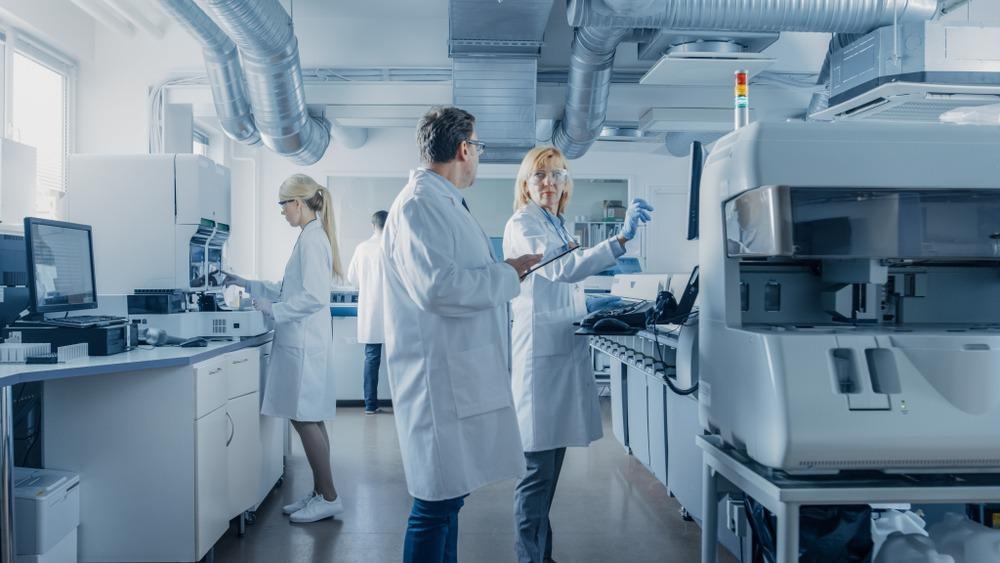 By Surbhi JainReviewed by Susha Cheriyedath, M.Sc.May 5 2022
By Surbhi JainReviewed by Susha Cheriyedath, M.Sc.May 5 2022In a review recently published in the open-access journal Polymers, researchers discussed the recent development in silsesquioxane-based materials with self-healing properties.

Study: Self-Healing Silsesquioxane-Based Materials. Image Credit: Gorodenkoff/Shutterstock.com
Background
Polymeric self-healing materials (SHM) have garnered great interest because of their dynamic features, which allow them to stabilize their performance over time, increase their service life, and reduce the environmental effect of synthetic materials. After external mechanical damage or a fracture, SHM can self-heal spontaneously or in response to environmental factors.
However, close contact between the fracture surfaces is essential to give enough time for component interaction and diffusion. Thus, a polymer's inherent ability to self-heal may be influenced not only by the kinetics of interactions and dynamic bond exchange but also by the mobility of macromolecular chains, which may facilitate or obstruct structural reconstruction.
The smallest known hybrid silica-like particles are polyhedral oligosilsesquioxanes (POSS). POSS have sparked a lot of interest, since they can be easily functionalized to create materials with customizable architectures and features. POSS play a critical role in materials chemistry and engineering as nano building blocks. Monodisperse POSS have been extensively used as components of hybrid polymer nanocomposites in recent years.
About the Study
In this study, the authors discussed the recent development in the field of SHM with POSS as building blocks. The studies published during the previous 14 years on POSS-containing self-healing materials were considered. The role of specific properties of POSS in the development of next-generation self-healing and dynamic systems, including materials designed for biomedicine and biotechnology, was described. Numerous characteristics of SHM with POSS as building blocks were demonstrated.
The researchers considered both the chemical structure of POSS derivatives and the specific application area for a given SHM in their design and development. The team covered the thoughts and research work in the development and potential applications of the self-healing hybrid materials incorporating POSS that were conducted during the last decade.
The self-healing of materials containing POSS was discussed, which was based on self-aggregation and phase separation of silsesquioxane moieties, along with the changes in macromolecule mobility in the polymer matrix mediated by the dynamic exchange of the corresponding bonds to POSS moieties. These effects were creatively used to build new generations of smart materials, such as tissue engineering materials, drug delivery systems, and hydrogels.
Observations
The synthetic hydrogel was reported to be sensitive to pH variations and had outstanding tensile mechanical properties as well as a rapid self-healing ability with the stress of 37.8 kPa and strain of 4683%. The self-healing efficiency improved when the crosslinking concentration of a star-shaped POSS crosslinker (HGP) increased from 0.2 to 0.8 mol%. The results of the amplitude oscillatory sweep tests with alternating stresses of 1% and 500% revealed information on HGP hydrogels' dynamic properties.
The addition of octa(γ-chloroammoniumpropyl)-silsesquioxane (OCAPS) lowered the swelling ratio of poly(N-isopropylacrylamide) (PNIPAM) hydrogel in deionized water, which resulted in improved mechanical properties of the OCAPS-PNIPAM hydrogel. The tensile test findings demonstrated the impact of N,N-di(2,3-dihydroxypropyl)-(aminopropyl) groups (POSS-AH) on the self-healing process. After the reconnection of the pieces of cut samples for 30 seconds at room temperature, the self-healing efficiency reached around 90% of the original mechanical strength in most of the studies. POSS-based self-healing systems have unique features that make them fascinating and flexible materials for a variety of applications.
Depending on the role POSS were expected to perform in a system, the synthetic technique could change. POSS (particularly double-decker silsesquioxanes) could be grafted into polymer backbone side chains or used as main chain segments. Appropriate functionalization permitted POSS molecules to form dynamic linkages, which made them an active component of SHM as crosslinking agents and factors that improved macromolecule dynamics in the polymer matrix. The latter effect could be achieved by reversible release of bulky POSS cages or by hydrophobic interactions and POSS aggregation, which resulted in the development of isolated inclusions in the polymer matrix.
The self-repairing activity of POSS-based polymer nanocomposites, hydrophobic coatings, or hydrogels could be influenced by a variety of circumstances. Appropriate functionalization could impact the intrinsic properties of SHM or permit the development of dynamic interactions with POSS molecules as reactive components. Reversible releasing of bulky POSS cages via metal-ligand interactions, Diels-Alder (DA) reactions, or thiol/disulfide chemistry could provide the macromolecular dynamics essential for efficient self-healing.
Conclusions
In conclusion, this study elucidated that POSS-based SHMs are appropriate for applications in sensors, objects with shape recovery properties, and nanostructured superhydrophobic coatings.
The authors emphasized that POSS are promising next-generation materials with enhanced mechanical properties owing to the particular chemistry of certain of the interactions that occur in them.
More from AZoM: Isotropic Properties of Solid Epoxy for 3D Printing
Disclaimer: The views expressed here are those of the author expressed in their private capacity and do not necessarily represent the views of AZoM.com Limited T/A AZoNetwork the owner and operator of this website. This disclaimer forms part of the Terms and conditions of use of this website.
Source:
Nowacka, M., Kowalewska, A., Self-Healing Silsesquioxane-Based Materials. Polymers 14(9) 1869 (2022). https://www.mdpi.com/2073-4360/14/9/1869